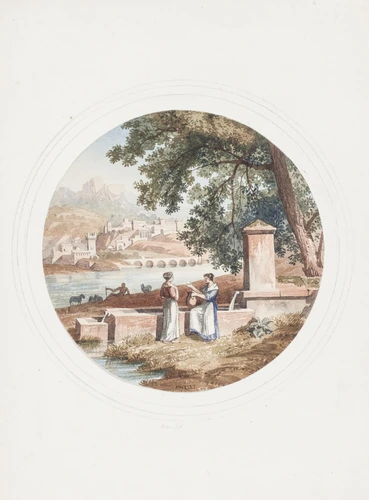Restitution d'un décor du portique du Macellum à Pompéi
Excavations in Pompeii started in the mid 18th century, although discoveries continued to be made throughout the 19th century. The paintings discovered in the homes of the ancient city greatly influenced the aesthetic choices of architects, who revised their views on internal and external decoration of buildings.
Winner of the Grand Prix de Rome in 1851, Gabriel Ancelet, then a student at the Villa Medici, was also interested in painted decorations. Here, he reproduced the decoration on the portico of the Macellum – the site of the market place in Roman times – discovered in 1822 and then known as the "Pantheon". This relic is typical of Fourth Style Pompeian painting (1st century BC to 1st century AD), which particularly attracted architects with the illusion created by the perspective, the trompe-l'oeil effects and the refinement of the architectural detailing. Charles Garnier also produced a record drawing of it that same year.
This plate by Ancelet was probably part of the work set for third year students, for which the Academy required an exact reproduction of the model. It is evident that the artist made a great effort to reproduce the brilliance of the colours of this astonishing illusionist decoration.
Ancelet also distinguished himself with his monumental "Envoi" (annual submission of work) of the Via Appia in Rome (1856). In 1873, he was given responsibility for teaching ornamental design at the Ecole des Beaux-Arts, evidence of his interest in decorative art.

